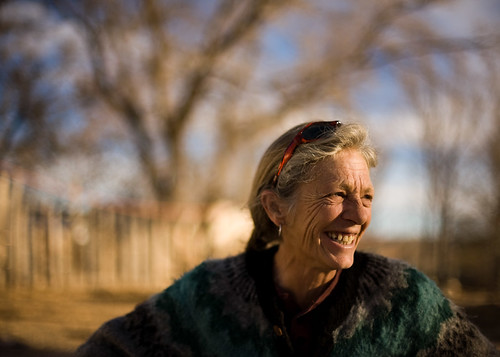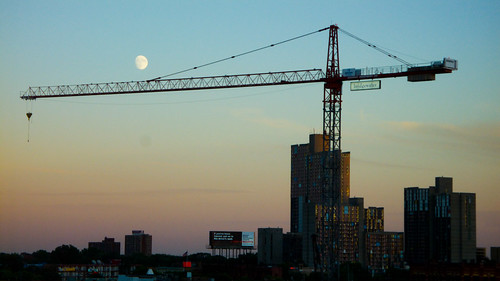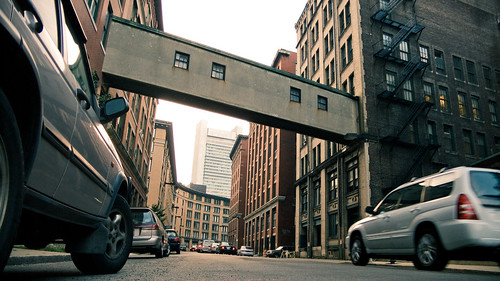Lightroom External Editors are the exact same thing as Aperture "plug-ins," except that they don't exist. Yet.
 Wednesday, August 6, 2008 at 4:40PM
Wednesday, August 6, 2008 at 4:40PM 
Adobe's bloggers have been quick to point out, and rightly so, that Lightroom 2's External Editor Presets are, in every way that matters, the same thing as Aperture's so-called "plug-ins." (Read Tom Hogarty's (Lightroom Senior Product Manager) detailed assessment here and John Nack's overview here)
Let me see if I can encapsulate the situation. I might get some of this wrong, so please correct me if I do.
Aperture, like Lightroom, is based around a model of non-destructive editing. You make adjustments to your photos, but you never edit the original file. Your adjustments are stored as a set of instructions that can be edited any time.
Both applications recognize that occasionally users might want to go beyond this model and make adjustments in some other application. So they offer the ability to chose an external editor application. Most people select Photoshop, but in both Lightroom and Aperture 1.x, you could chose any one app for this purpose.
Aperture 2 expanded this functionality to allow any number of external editors, available in a convenient contextual menu. It ships with an example called Dodge and Burn. When you select it, your current corrections are baked into a new image, and that file is loaded into the external application, which appears over top of the Aperture UI. You make edits, and the results are passed back to Aperture as a new image in your Library. Your original is still there, with its non-destructive edits live and re-workable, but the new file has those edits permanently baked in, with the adjustments provided by the external application applied atop, again, permanently baked in. You may now add additional non-destructive adjustments atop this new file.
Although these external editors are simply standalone applications, there is still an SDK that must be followed to make them work with Aperture. Developers with cool, stand-alone image editing software need to modify their code to be compatible.
Apple chose to call these external editors "plug-ins," which I think is misleading. But Apple is shrewd—"plug-in support" is something people have wanted from both Aperture and Lightroom, and by naming this feature as such Apple continues their proud tradition of getting the marketing 100% right, even if the product isn't.
By the way, I'm not trying to be harsh here. Aperture is a very good program, and although I don't use it, it offers many features that Lighroom does not, some of which I really miss. But I fear that Lightroom is getting dinged a bit simply for honest about what constitutes a "plug-in" in a non-destructive workflow. You've actually got the Senior Product Manager blogging well-considered windows into future Lightroom development: "Photographers would still like to see image processing plug-ins in Lightroom and I agree with them. But for a plug-in to actually behave like a plug-in it can't break the non-destructive workflow." You'll never see this kind of revelation from Apple.
I say this a lot: Software is about relationships. Adobe has been amazing about opening up the development process for Lightroom, from blogs to podcasts to public betas. Apple likes to surprise us with badass new software out of the blue. Adobe likes to be an active part of the community that uses their stuff. That means more to me than a barrel full of features.
Lightroom 2 adds the same functionality that Apple calls "plug-ins," but instead calls them External Editor Presets. An unsexy but honest name. And as John Nack points out, "Unlike Aperture, LR doesn't require developers to rewrite code to work as a plug-in. Instead, it simply lets external apps open/save image data as they normally would. Less work for developers should translate into more options, sooner, for photographers."
And that leads me to my ultimate point: I'm ready to start spending money on external editors for Lightroom. So where are they? The external editor workflow is not always ideal. For creative adjustments like dodge and burn, it's downright unusable (especially after you've tasted the glory of Lightroom 2's non-destructive local adjustments). But for other edits, like lens distortion removal and noise reduction, it can be fine. So here I am waiting for Noise Ninja and Neat Image and who knows what else to populate my Edit With... menu. Photoshop and Aperture plug-in developers, please prove Mr. Nack correct!
UPDATE: I did hear from some informed folks about this. The thing that makes Aperture plug-ins plug-ins is simply that they run inside the Aperture process. They have an advantage in that they can tell Aperture what kind of image they'd like, whereas a Lightroom user needs to set export preferences manually. But Aperture plug-ins also need to share memory with the host application, and can crash Aperture if they crash. In Lightroom's case, letting the external editor be its own app has the advantage that the now-64-bit Lightroom can use a 32 bit external editor.
The real point is that with Lightroom, any standalone app that edits an image can be used as an external editor. As Lightroom engineering lead Troy Gaul twittered, Noise Ninja standalone could work a treat with a minor modification. The irony of this is that, with the spate of low-cost, simple image manipulation programs being developed (many based on Apple's Core Image technology), Lightroom-based photographers might be in a better position than Aperture users to supplant Photoshop in their workflows!
Buy Aperture or Lightroom (or upgrade Lightroom) from Amazon and support ProLost.






















